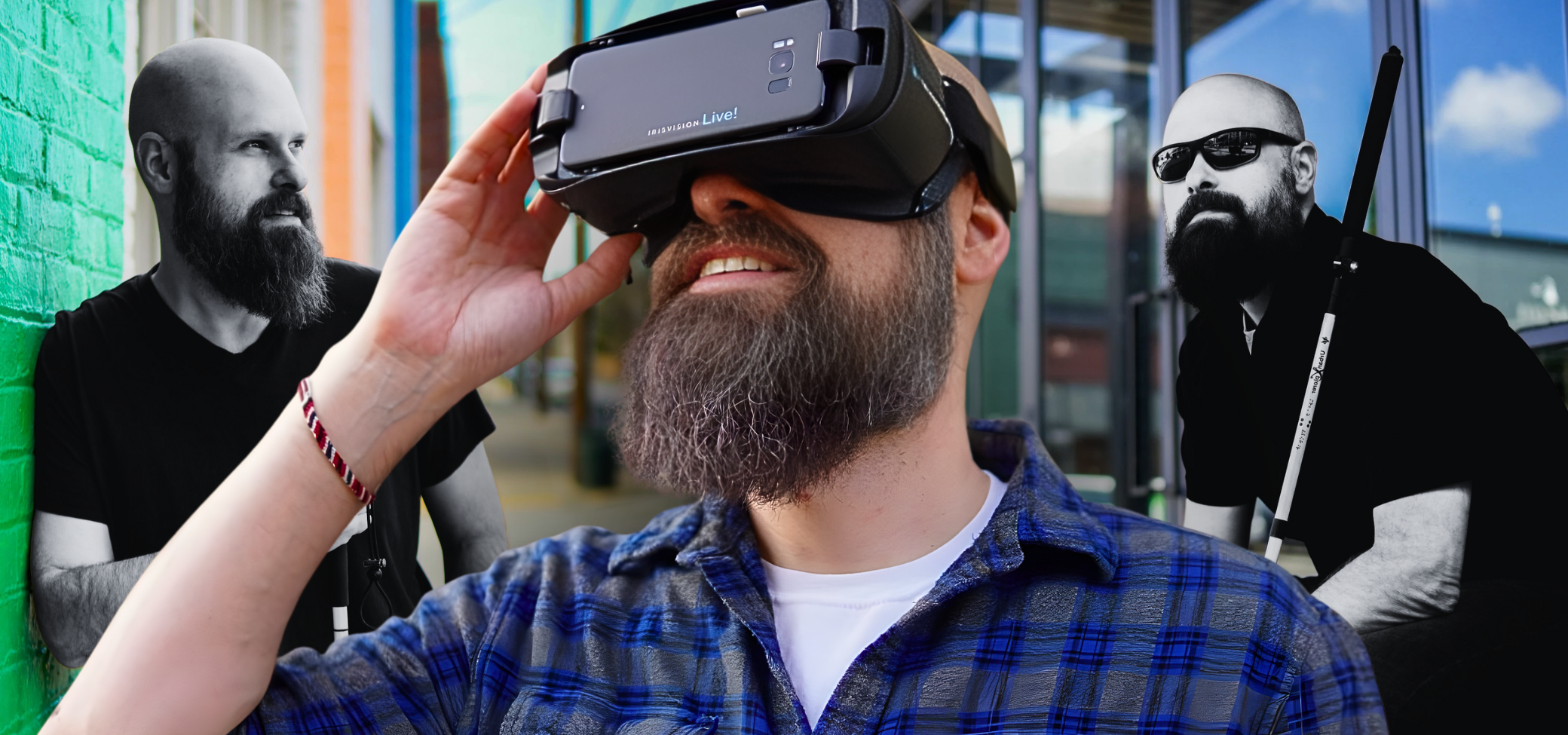The Blind Life: How Sam Seavey Turns Vision Loss Into Empowerment
At InviOcean, we highlight voices shaping the future of accessibility — creators, innovators, and everyday changemakers who make digital spaces more inclusive for all.

This time, we spoke with Sam Seavey, the mind behind The Blind Life — one of the most influential YouTube channels for people living with vision loss.
As an assistive technology expert, speaker, and content creator, Sam has inspired thousands to rediscover independence, curiosity, and joy through accessible technology.
We sat down with Sam to talk about his journey, his creative process, and the evolving world of assistive innovation.
Could you tell us a bit about yourself?
I’m Sam Seavey, creator of The Blind Life, a YouTube channel and online platform dedicated to helping people live their best lives with vision loss. I’m an assistive technology expert, speaker, and content creator based in the US.
How did you lose your vision, and how did it impact your life?
I was diagnosed with Stargardt’s disease at age 11 — a form of juvenile macular degeneration. It gradually took away my central vision, leaving me legally blind by my mid-teens.
Growing up, I often felt isolated and tried to hide my impairment. It wasn’t until my 30s that I truly accepted my vision loss, largely thanks to my wife Rachel’s support.
How did the idea for The Blind Life YouTube channel come about?
In 2012, I was hired to create videos for a mobile tech channel. I added a few about accessibility apps — and the response was overwhelming. That’s when I realized there was a gap in resources for people with Stargardt’s and low vision.
So in 2013, I launched The Blind Life to share my experiences and help others navigate theirs.
What’s the most important part of your content — education, inspiration, or building community?
All three matter, but for me, education and empowerment come first. I want people to know that vision loss doesn’t mean the end of independence or joy.
Building community is a close second — connecting with others who get it can be life-changing.
Video is a visual medium. Is there something paradoxical about using it to talk about blindness?
Absolutely — it’s ironic, but that’s part of its power. Video helps me demystify blindness and show how assistive tech bridges the gap. I also use audio cues and descriptive narration so my content is accessible to blind viewers, too.
How do you choose topics for your videos?
I listen to my audience. I’m active in low vision Facebook groups and forums, and I often create videos based on community questions or product requests.
I also reach out to companies to review tech from a blind user’s perspective and attend assistive technology conferences to stay up to date and share new developments with my audience.
Which video unexpectedly became really popular?
One standout is “Stargardt Disease / Macular Degeneration – How I See,” which has over 100K views.
People are curious about how blind individuals perceive the world, and that video gave a personal, visual explanation. It also became a favorite among those living with Stargardt’s — they often use it to help their families understand what they see.
Was there a video that deeply moved your audience or brought surprising feedback?
Definitely. The videos where I share personal struggles and triumphs — like adapting to vision loss or parenting with low vision — always get heartfelt responses.
One that stands out is “Flying Blind.” In it, I talk about my lifelong dream of flying an airplane — something I thought would never be possible. But with determination and support, I made it happen. It’s proof that with help and creativity, almost anything is possible.
What are some challenges you face when filming or editing videos?
Lighting, framing, and editing can be tough. I use consistent setups, audio cues, and large interfaces to make things manageable.
I edit by listening to audio waveforms and rely on software accessibility — especially in DaVinci Resolve. My Sony cameras are also incredibly helpful; Sony has done a lot to make their gear accessible.
Do you work alone, or do you have a team?
It’s mostly a solo operation — I film, edit, and upload everything myself. I do collaborate with companies and sometimes get a little help from family or friends during setup.
You review a lot of tech. What do you feel when you try something new — excitement, skepticism, or hope?
All of the above! I love new assistive tech, but I’ve learned to stay cautiously optimistic. I always test products thoroughly and share my honest opinions.
Integrity and transparency with my audience are the most important things to me.
What devices and software do you use daily?
A mix of high-tech and low-tech tools: handheld and digital magnifiers, smartphone apps like Seeing AI and Be My Eyes, screen readers, and talking gadgets like a food thermometer.
I spend a lot of time editing videos, and I couldn’t do that without the built-in accessibility on my computer.
Which technologies have had the biggest impact on your independence?
Smartphones and AI-powered accessibility apps — especially Seeing AI — have been absolute game-changers. They let me read, navigate, and interact more freely.
Recently, I’ve also been impressed by the Ray-Ban Meta Smart Glasses.
Do you think the tech industry is becoming more inclusive?
Yes, though there’s still a long way to go. Big companies like Microsoft, Google, and Apple are making progress, and I’ve been lucky to collaborate with them.
But accessibility isn’t perfect yet — that’s why advocacy remains essential.
Is there a gadget or app you dream of that doesn’t exist yet?
I’d love a universal smart assistant that combines all accessibility tools — OCR, navigation, object recognition — into one simple interface.
And honestly, a personal robot assistant would be pretty amazing too.
If you had unlimited resources, what device would you build?
A wearable AI assistant that uses real-time scanning, voice feedback, and haptic cues to help users navigate, identify objects, and interact naturally with the world around them.
What kind of technological progress do you find a little scary?
Probably facial recognition. It’s extremely useful, but it can also be dangerous in the wrong hands. Like all technology, it needs strong ethics behind it.
Through The Blind Life, Sam Seavey continues to redefine what it means to live with vision loss — with honesty, humor, and heart.
His message is simple yet powerful: vision loss changes how you see the world, not how you live in it.
